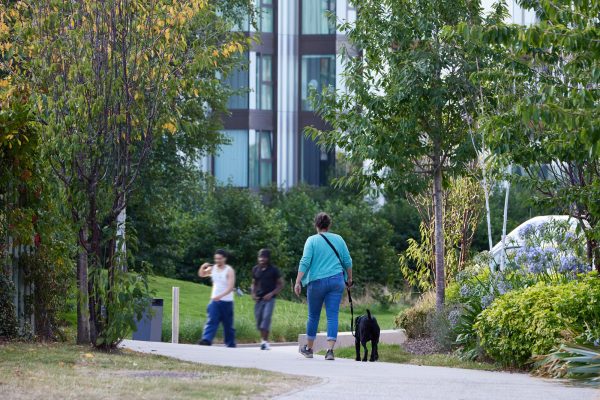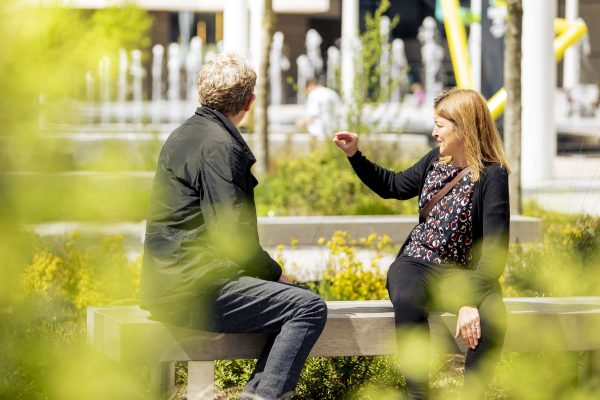Exploring Sustainability and Responsibility in Landscape Design

Exploring Sustainability and Responsibility in Landscape Design
In the fight against climate change, architects and landscape architects find themselves at a pivotal juncture, tasked with balancing aesthetic vision, ecological responsibility, and accountability. Sustainability is no longer an optional enhancement; it has become the essential framework shaping the future of our built environment.
For landscape architects, this responsibility is especially profound. Their work not only defines outdoor spaces but also directly impacts biodiversity, water systems, and urban climates.
“Sustainability is not just a trend-it’s a responsibility. Our choices as designers have the power to conserve resources, reduce pollution, and support local ecosystems. It’s about creating landscapes that feel natural and resilient, ensuring they thrive for generations to come.”

The Foundation of Responsible Landscape Design
Sustainability is at the heart of landscape design, aligning with the UN’s Sustainable Development Goals and driving progress toward a net-zero, climate-resilient world. Landscape architects play a pivotal role in promoting sustainability by prioritising long-term environmental health. From preserving existing ecosystems to designing new habitats that ensure biodiversity net gain, every choice matters.
Key strategies such as Sustainable Urban Drainage Systems (SuDS), rainwater harvesting, and native planting exemplify how landscape architects balance environmental stewardship with meeting human needs. These methods highlight the profession’s ability to integrate ecological responsibility seamlessly into functional, inspiring designs.


Balancing Aesthetic Appeal and Ecological Responsibility
The interplay between visual appeal and ecological health presents an ongoing challenge. The public often associates manicured spaces with beauty, yet naturalistic planting designs, such as those inspired by Piet Oudolf, are redefining these perceptions. Anna Egerton-King, Bond Bryan Graduate Landscape Architect, reflects on Oudolf’s philosophy: “A plant is only worth growing if it looks good when it is dead,” which underscores the enduring beauty of natural landscapes across all seasons.
Anna notes: “We believe a landscape can be both stunning and sustainable. When a design is rooted in nature, it becomes both beautiful and responsible.” This shift toward naturalistic forms not only enhances biodiversity but also requires public education and engagement to shift conventional perceptions of what is “beautiful.”

Overcoming Challenges in Sustainable Design
Despite its importance, implementing sustainable practices is not without obstacles. Budget limitations, client priorities, and public resistance to change often hinder eco-friendly solutions. For example, native planting—which reduces water use and supports biodiversity—may be dismissed as too “wild” or “untidy.” Similarly, the upfront costs of recycled materials or green infrastructure can deter clients seeking immediate returns.
However, these challenges can be addressed through early collaboration. By involving landscape architects, architects, and engineers from the project’s inception, sustainability becomes an integral part of the conversation. As Pooja notes:
“It’s easiest to introduce sustainability as a priority at the beginning stages of a project. Those early discussions can set the tone for sustainable design principles throughout.”

Landscape Design as a Climate Solution
Landscape architects are uniquely positioned to combat climate change, especially in urban settings. Their designs can mitigate the heat island effect through green roofs, tree canopies, and permeable surfaces, cooling cities and reducing energy demands. Features such as rain gardens and bioswales manage stormwater naturally, minimising flood risks and improving water quality.
The emerging trend of regenerative landscape design represents a significant evolution. Moving beyond sustainability, this approach focuses on restoring and revitalising damaged ecosystems, creating closed-loop systems that prioritise long-term environmental health over short-term gains.

Engaging Clients and Communities
Ultimately, the success of sustainable landscape designs hinges on client and engagement and community involvement. Educating clients about the long-term benefits—such as lower maintenance costs, ecological resilience, and improved wellbeing—helps build support for sustainable practices.
Similarly, involving communities in the design process ensures that landscapes are not only environmentally responsible but also meaningful, reflecting the needs and values of their users.

Looking Ahead: A Call to Action
Aspiring landscape designers have a vital role in shaping a sustainable future. Pooja offers this advice:
“Cultivate a mindset of curiosity and experimentation. Don’t be afraid to push boundaries with ideas that prioritise sustainability. Engage with your community, invest time in regenerative practices, and remember that every small change can lead to a big difference.”
As the industry evolves, landscape architects must continue to challenge conventions, embrace innovation, and take ownership of their role in shaping a more sustainable future. The responsibility is significant, but so is the opportunity – to create landscapes that not only endure but thrive, leaving a legacy of beauty and ecological health for generations to come.
